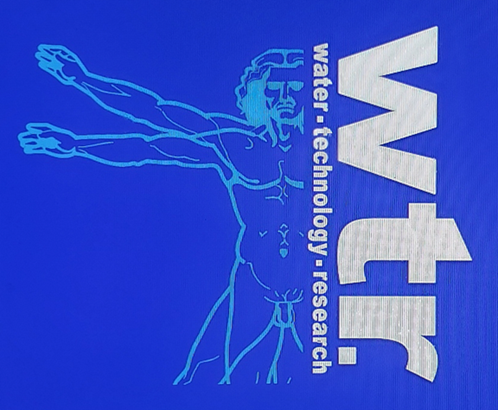WTR Texas and Municipal Wastewater Treatment

An internet investigation into coastal contamination will reveal that fecal contamination is an international problem. At anyone time, for just territories of the USA coastal areas, more than 50% of beaches are contaminated with fecal bacteria.
This fact is a significant indictment against conventional, outdated 20th century sewage treatment practices.
The basic process of sewage treatment is conventionally a biologic digestor (either aerobic or anaerobic) to breakdown organic matter and solids. Digestor effluent then flows into a settling tank, from which water is decanted, filtered, then treated with either ozone or a chlorine product to attempt to disinfect the biproduct. UV exposure is often included in yet another attempt to add an additional level of disinfection.
Negative consequences of this protocol are that settling tanks will contribute bacteria and algae to the waste stream. This then contributes to significant filamentous bacterial growth in the filters. This results in organic matter and bacteria loading that the final disinfection stage is not able to handle without adding toxic elements to the final effluent that is disposed of into streams, lakes, estuaries, and coastal regions.
WTR Texas is a subsidiary of Keylate Solutions LLC. WTR Texas’ proprietary, innovative, 21st century technologies have been developed to eliminate the consequences of the outdated, current, 20th century standard for municipal wastewater treatments protocols. Our treatment of the digestor effluent with our proprietary blending and treatment system will eliminate bacteria and algae growth in the settling tanks. Our process breaks down organics that chlorine or ozone cannot. Our use of On-Site Generation, or OSG, circumvents the use of the standardly accepted harmful chemicals and their byproducts by the introduction of Oxidation Potential.
By having an appropriate Oxidation Potential entering the filter, filamentous bacteria can be better managed, if not eliminated. So, by maintaining an appropriate Oxidation Potential, post filtration, fecal contamination can be eliminated.
In addition to the WTR Texas’ wastewater treatment process, we are developing alternative ways to deal with the effluent water that does not include dumping into our streams, lakes, estuaries, and coastal regions, saving out natural resources form harm.
Another technology that WTR Texas has under development is a non-chemical means to breakdown the growing problem of chemicals that biologic digesters are not capable of dealing with. Man made agents such as opioids, pharmaceuticals, cosmetics, PFAS are among the growing list of contaminants showing up in sensitive environments and potable water sources. Current outdated 20th century protocols have no way of treating or eliminating these contaminants.
WTR Texas’ innovations are not readjustments of current, outdated, conventional technologies but are unique and proprietary technologies that bring together new approaches of chemical and non-chemical technologies to advance treatment protocols that answer 21st century problems.
Case Study WTR OSG Treats Filamentous Bacteria Bulking
In a U.S. wastewater treatment plant, the operators came in one morning to find that the secondary clarifier’s solids levels were slowly approaching the overflow weirs. They ran several tests: TSS (Total Suspended Solids), DO (Dissolved Oxygen), and settlometer. The settling rate after 30 minutes was less than 50 ml in a 1000 ml settlometer. The DO was less than 1.0 mg/l. The TSS in the effluent was over 20 mg/l (The plant normally ran TSS at or below 5 mg/l.). The plant chief operator was immediately notified of these conditions and informed the State Regulatory Agency. This had been an ongoing seasonal problem where excessive amounts of filamentous bacteria were in the mixed liquor. In the past, the plant chief operator would have to take the following actions: 1) feed 30 mg/l of chlorine (300 mg/l of liquid sodium hypochlorite at 12.5% per MGD-250 gal/MGD) for 3 days to the RAS; 2) slow the plant’s effluent discharge (using onsite storage basin); 3) notify the State Regulatory Agency about what’s going on at his plant; 4) after high chlorination start reseeding the mixed liquor; 5) wait for two weeks while the biological system (Mass) was restored; and 6) monitor DO, TSS, and settling rates, hoping things would turn around quickly.
Instead, the chief plant operator tested out a new product, WTR OSG. In studies using ozone it talks about the effectiveness of ozone to control filamentous bacteria at a very low dosage (1-5 ppm as gaseous ozone). However, WTR OSG had never been tested in this process or these conditions. So the plant operator decided to start off with 25 mg/l of TC 9450 into the return line to the mixed liquor. They were told to monitor the DO (range 2.0 mg/l to 5.0 mg/l) by using the blowers in the aeration basin. Normally under these conditions, the plant would turn off the blowers, but using WTR OSG, the blowers could be kept on.
The next day, the secondary clarifier, which was 10 ft. tall, had 6 ft. of clarity. The sludge blanket was down. There was little or no floc carryover in the secondary clarifier’s effluent. The chlorine feed rate (as measured by chlorine residual) to the effluent had dropped too. Looking at a sample of mixed liquor under a microscope, there was a healthy biological population. By early afternoon, the chief plant operator decided to reduce the feed rate of
WTR OSG to 12 mg/l and ran the system for another 24 hours. On the 3rd day, they discontinued feeding WTR OSG. The DO was back at 3.5 mg/l to 5.0 mg/l. They cut back the operating cycle of the blowers. The settlometer reading was 300 ml at 30 minutes. The effluent turbidity was less than 1.0 NTU, with no settlable solids.
The chief plant operator observed that using WTR OSG, the filamentous bacteria population was reduced not eliminated. In publications, studies have shown that having some filamentous bacteria in a wastewater treatment system, benefits the settling of the mixed liquor in secondary clarifiers. However, over population of filamentous bacteria will create “bulking in the clarifier” and floc carryover. In several other studies, ozone was shown to be effective at controlling filamentous bacteria because the singlet oxygen molecule generated by ozone was able to penetrate the multiple layers found in the cell wall of the filamentous bacteria better than chlorine at a lower dosage. The singlet oxygen molecule penetrated the cell membrane, causing the DNA of the nucleus to implode.
The net results of WTR OSG Treating Filamentous Bacteria Bulking were:
No State Regulatory Violations
The plant’s problem was turned around in 24 hours.
There were no overtime costs or additional expenses.
The plant had a cost effective solution to control bulking.
After the plant process was stabilized, the chief plant operator did a cost analysis on using
WTR OSG vs. sodium hypochlorite:
Current Program
Product: Na-Cl2
Dosage: 900 mg/l
Proposed Program
Product: WTR OSG
Dosage: 37 mg/l
Costs not included in this calculation:
Cost to haul in seeding stock-$600 per truckload (Average 2-3 truckloads)
Plant Violation- $5,000 per day to $25,000 per incident
Plant Operation-extra lab, man-hours at plant and reprocessing wastewater
Based on the results from this short test, if you see poor settling in your clarifier or you notice excessive foam, we recommend testing WTR OSG to help you gain control of your biological process.
